
Paradera: The Hidden Gem of Aruba
Discover the serene beauty and rich culture of Paradera, Aruba's hidden gem, where nature, history, and local charm come together in perfect harmony.
Nestled in the heart of Aruba, Paradera is a charming town that offers an authentic slice of island life. Away from the bustling tourist hubs, Paradera provides a serene and tranquil atmosphere perfect for those looking to unwind and immerse themselves in local culture. The town is surrounded by natural beauty, including the iconic Casibari Rock Formations, which offer breathtaking views and opportunities for hiking and exploration. Paradera is also home to the beautiful Ayo Rock Formations, another stunning natural wonder. These ancient boulders are steeped in history and provide a unique backdrop for photography enthusiasts. The town itself is dotted with quaint local shops and eateries, where you can sample traditional Aruban cuisine and interact with friendly locals. For those interested in history and culture, Paradera does not disappoint. The Alto Vista Chapel, one of the oldest religious structures on the island, is a must-visit. This picturesque chapel offers not only a glimpse into Aruba's spiritual heritage but also panoramic views of the island's north coast. Whether you're a nature lover, a history buff, or simply seeking a peaceful retreat, Paradera has something to offer everyone.
Local tips in Paradera
- Visit the Casibari and Ayo Rock Formations early in the morning to avoid the midday heat.
- Take a guided tour to learn about the history and significance of the Alto Vista Chapel.
- Try local dishes like Keshi Yena and Pastechi at small family-owned eateries.
- Rent a bike to explore the town and its surroundings at your own pace.
- Stay hydrated and wear sunscreen, as the Aruban sun can be quite strong.
Paradera: The Hidden Gem of Aruba
Nestled in the heart of Aruba, Paradera is a charming town that offers an authentic slice of island life. Away from the bustling tourist hubs, Paradera provides a serene and tranquil atmosphere perfect for those looking to unwind and immerse themselves in local culture. The town is surrounded by natural beauty, including the iconic Casibari Rock Formations, which offer breathtaking views and opportunities for hiking and exploration. Paradera is also home to the beautiful Ayo Rock Formations, another stunning natural wonder. These ancient boulders are steeped in history and provide a unique backdrop for photography enthusiasts. The town itself is dotted with quaint local shops and eateries, where you can sample traditional Aruban cuisine and interact with friendly locals. For those interested in history and culture, Paradera does not disappoint. The Alto Vista Chapel, one of the oldest religious structures on the island, is a must-visit. This picturesque chapel offers not only a glimpse into Aruba's spiritual heritage but also panoramic views of the island's north coast. Whether you're a nature lover, a history buff, or simply seeking a peaceful retreat, Paradera has something to offer everyone.
When is the best time to go to Paradera?
Iconic landmarks you can’t miss
California Lighthouse
Discover the California Lighthouse, a historical gem in Aruba, offering stunning views and rich maritime history, perfect for any traveler's itinerary.

Natural Bridge Aruba
Explore Aruba's Natural Bridge, a breathtaking geological wonder steeped in history, offering stunning views of the Caribbean Sea.

Casibari Rock Formations
Discover the breathtaking Casibari Rock Formations in Aruba, a stunning natural wonder offering panoramic views and unique geological beauty.

Arikok National Park
Discover the beauty of Aruba at Arikok National Park, where stunning landscapes, rich wildlife, and cultural heritage await every visitor.

Butterfly Farm
Discover the magic of nature at the Butterfly Farm in Aruba, where vibrant butterflies and lush greenery create a breathtaking experience for all visitors.

Alto Vista Chapel
Discover the tranquil beauty of Alto Vista Chapel, a spiritual gem in Aruba offering stunning views and a peaceful retreat for all visitors.

Conchi Natural Pool
Experience the breathtaking beauty of Conchi Natural Pool, a hidden gem in Aruba, where tranquility and nature meet in perfect harmony.

Bushiribana Ruins
Discover the rich history and breathtaking views at Bushiribana Ruins, Aruba's captivating historical landmark and a true gem for every traveler.
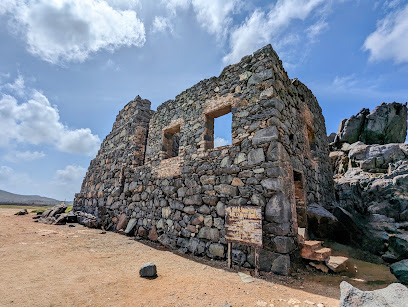
Philip's Animal Garden
Explore Philip's Animal Garden in Aruba, a unique zoo and wildlife rescue center where education meets adventure amidst a rich biodiversity.

Bushiribana Gold Smelter
Explore the historic ruins of Bushiribana Gold Smelter in Aruba, where nature meets a fascinating industrial heritage.

Ayo Rock Formations
Discover the awe-inspiring Ayo Rock Formations in Aruba, where nature's artistry meets ancient history in a stunning landscape.

Antilla Shipwreck
Discover the Antilla Shipwreck, an enchanting underwater landmark in Aruba, perfect for diving and snorkeling enthusiasts seeking adventure.

Aruba Ostrich Farm
Experience the unique charm of Aruba Ostrich Farm, where you can learn about and interact with these fascinating birds in a serene setting.

Bubali Bird Sanctuary
Experience Aruba's natural beauty at Bubali Bird Sanctuary, a peaceful haven for birdwatching and wildlife exploration in Noord.

Red Anchor
Discover the Red Anchor, a historical landmark in San Nicolas, Aruba, offering a glimpse into the island's maritime past and stunning coastal views.

Unmissable attractions to see
Natural Bridge Aruba
Discover the breathtaking Natural Bridge in Aruba, a stunning historical landmark showcasing the island's natural beauty and geological wonders.

Eagle Beach
Experience the breathtaking beauty of Eagle Beach in Aruba, a top destination for sun, sand, and unforgettable memories.

Casibari Rock Formations
Explore the stunning Casibari Rock Formations, a natural wonder in Aruba offering breathtaking views and a unique geological experience.

Arikok National Park
Discover Aruba's hidden gems at Arikok National Park, where breathtaking landscapes and rich history await every traveler.

De Palm Tours Aruba
Explore Aruba's beauty with De Palm Tours, offering diverse excursions and unforgettable adventures in the heart of the Caribbean.

De Palm Island
Experience the ultimate tropical paradise at De Palm Island, Aruba's premier destination for fun, relaxation, and adventure in the Caribbean.

Aruba Aloe Factory Museum and Store
Explore Aruba's aloe vera heritage at the Aloe Factory Museum and Store, where history, nature, and wellness come together.

The Butterfly Farm Aruba
Explore the enchanting world of butterflies at The Butterfly Farm Aruba, a serene attraction full of vibrant colors and educational experiences.

Alto Vista Chapel
Discover the peaceful Alto Vista Chapel in Aruba, a serene spot for reflection with stunning views and rich cultural heritage.

Baby Beach
Experience the serene beauty of Baby Beach in San Nicolas, Aruba, where turquoise waters and soft sands create a perfect tropical getaway.

Conchi Natural Pool
Experience the breathtaking beauty of Conchi Natural Pool in Santa Cruz, Aruba—a hidden gem for swimming and snorkeling amidst stunning natural landscapes.

Philip's Animal Garden
Explore Philip's Animal Garden in Aruba, a wildlife sanctuary offering interactive experiences and a commitment to animal rescue and conservation.

Donkey Sanctuary Aruba
Experience the charm and compassion of Donkey Sanctuary Aruba, a tranquil refuge for rescued donkeys in the heart of Santa Cruz.
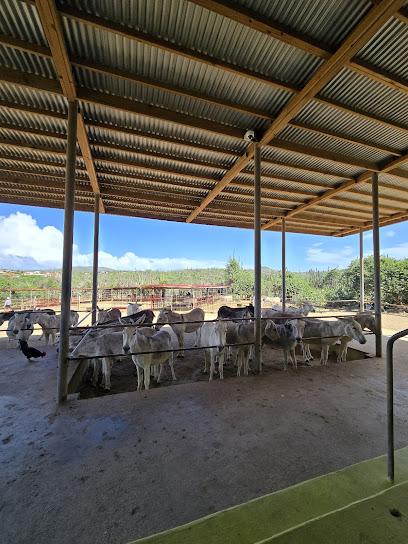
Boca Catalina Beach
Experience the tranquil beauty of Boca Catalina Beach in Aruba, a paradise for sunbathers, snorkelers, and nature lovers alike.
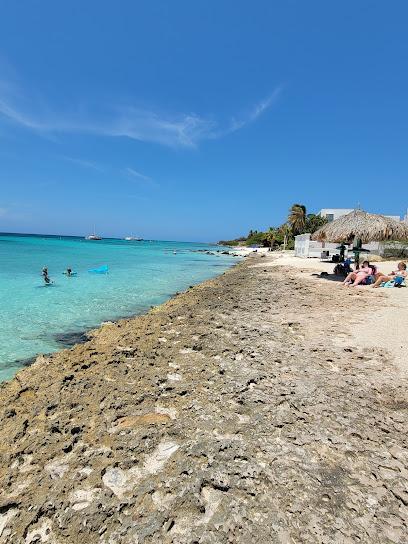
ABC Tours Aruba
Experience Aruba's stunning landscapes and hidden treasures with ABC Tours - your ultimate guide to unforgettable adventures in paradise.

Essential places to dine
Los Cafeteros Restaurant
Discover authentic Aruban cuisine at Los Cafeteros Restaurant – where flavor meets affordability in a vibrant setting.

Quinta del Carmen
Experience exquisite dining at Quinta del Carmen, where international flavors meet Caribbean charm in Oranjestad, Aruba.

Lima Bistro
Experience the best of Aruba's culinary scene at Lima Bistro - where local flavors meet exquisite international cuisine.

Kikoriko Aruba (Grilled Chicken)
Experience authentic Colombian cuisine with delicious grilled chicken at Kikoriko Aruba, a must-visit culinary gem in Oranjestad.
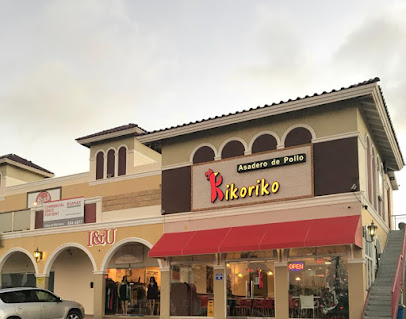
Delimar Peruvian Restaurant
Experience authentic Peruvian cuisine at Delimar Restaurant in Oranjestad - A culinary delight awaits!

Arepados Bar Cafe Aruba
Savor authentic Venezuelan cuisine at Arepados Bar Cafe in Aruba – home of delicious arepas and delightful breakfast options.

Taste My Aruba
Discover Taste My Aruba: A Seafood Bistro Offering Fresh Caribbean Flavors in the Heart of Oranjestad.

Subway Paradera
Experience fresh flavors at Subway Paradera in Aruba - perfect for quick bites and customizable meals amidst your island explorations.

Casa Vieja Bar & Restaurant
Experience authentic Aruban cuisine in a vibrant setting at Casa Vieja Bar & Restaurant - where local flavors meet friendly hospitality.

Petje's Surinamese Fusion Cuisine
Discover the vibrant fusion of traditional Surinamese cuisine at Petje's in Aruba, where every dish is a celebration of flavor.

Casibari Cafe and Grill
Experience authentic Aruban flavors at Casibari Cafe and Grill in Paradera - a culinary destination offering delicious dishes in a vibrant setting.

The LionFish Snack Aruba
Discover fresh seafood delights at The LionFish Snack Aruba – where every bite captures the essence of island life!

Shiribana Cafe
Discover authentic Chinese cuisine at Shiribana Cafe in Paradera – where flavor meets local charm in Aruba's vibrant dining scene.

Domino's Pizza Paradera
Discover delicious pizza at Domino's Pizza Paradera – your go-to spot for takeout and delivery in Aruba!

Glenn's Place
Experience authentic Aruban cuisine at Glenn's Place – where delicious food meets warm hospitality in Noord.

Markets, malls and hidden boutiques
Hong Kong Supermarket
Discover a world of authentic Chinese flavors at Hong Kong Supermarket in Paradera, the ultimate destination for culinary enthusiasts.

Morning Supermarket
Discover the vibrant flavors of Aruba at Morning Supermarket, your go-to destination for local groceries and snacks in Oranjestad.

Cheng Xing Supermarket
Explore Cheng Xing Supermarket in Aruba for a vibrant selection of authentic Chinese groceries and unique Asian culinary delights.

Salina Department Store
Experience a vibrant shopping journey at Salina Department Store in Paradera, Aruba, featuring local crafts and trendy finds for every taste.

Melz Fashion
Explore the vibrant styles and unique fashion accessories at Melz Fashion, Santa Cruz's top clothing store for tourists seeking local flair.
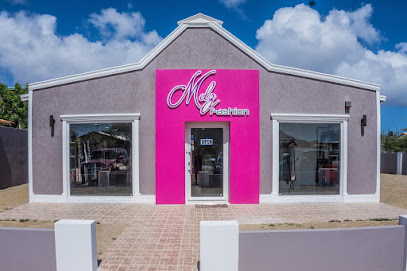
Island Grind Coffee Paradera
Discover the rich flavors of Aruba at Island Grind Coffee, your cozy retreat for freshly brewed coffee and delightful pastries.

Best Deal Aruba
Explore Best Deal Aruba, a bustling shopping mall in Paradera, offering a diverse array of shops and a unique taste of Aruban culture.
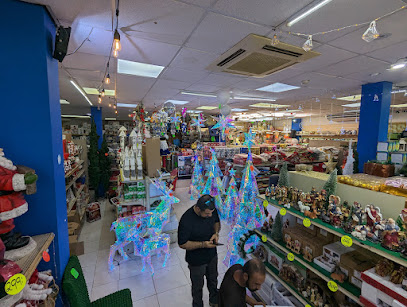
La & Lu Fashion
Explore La & Lu Fashion in Aruba for unique women's clothing that blends local culture with contemporary style, perfect for every occasion.

Bloemond Supermarket
Experience the local flavors of Aruba at Bloemond Supermarket, where fresh produce and authentic products await you.

Op = Op Voordeelshop Paradera
Explore the flavors of Aruba at Op = Op Voordeelshop, your budget-friendly grocery store in Paradera offering local delights and essentials.

Shum's Store
Discover Shum's Store in Aruba - a vibrant toy haven offering a magical selection of toys for children and nostalgic treasures for adults.

LOX SING SUPERMARKET
Experience the vibrant local culture and culinary delights at LOX SING SUPERMARKET in Aruba, your ultimate shopping destination.

K&G Piedra Plat
Explore K&G Piedra Plat, Aruba's premier gift shop for art supplies, crafts, and unique souvenirs reflecting the island's vibrant culture.

L XV Antiques & Curiosities
Explore L XV Antiques & Curiosities in Aruba for unique finds and a glimpse into the past with every charming piece.

Creatique Art & Design
Explore the vibrant fashion scene at Creatique Art & Design, the ultimate clothing store in Oranjestad, Aruba, offering unique designs and local craftsmanship.

Essential bars & hidden hideouts
Reflexions Beach Bar & Restaurant Aruba
Discover the ultimate beachside dining and nightlife experience at Reflexions Beach Bar & Restaurant in Aruba.

Sandra's Garden
Discover the tropical charm of Sandra's Garden, a vibrant bar and cafe nestled in Aruba's Linear Park, perfect for relaxation and socializing.

Café Chaos
Experience the lively spirit of Aruba at Café Chaos, a bar where locals and tourists gather for unforgettable nights filled with music and great drinks.

Casibari Cafe and Grill
Experience the vibrant flavors of Aruba at Casibari Cafe and Grill, a local favorite for delicious food and lively atmosphere.

The LionFish Snack Aruba
Discover the best seafood in Aruba at The LionFish Snack, where fresh flavors meet a laid-back atmosphere, perfect for every foodie.

Torino Sports Bar and Grill
Discover the lively Torino Sports Bar and Grill in Oranjestad, Aruba – where delicious food, refreshing drinks, and vibrant nightlife come together.

Cas Casuela Bar
Discover the lively ambiance and refreshing cocktails at Cas Casuela Bar in Oranjestad, Aruba - a top destination for nightlife lovers.

Anytime Bar & Restaurant
Savor authentic Chinese cuisine in a welcoming atmosphere at Anytime Bar & Restaurant in Paradera, Aruba, perfect for any time of day.

Pacifico Bar Restaurant
Experience the vibrant tastes of Aruba at Pacifico Bar Restaurant, where local flavors meet a welcoming atmosphere for unforgettable dining.

La Barra Vídeo Bar
Discover the vibrant nightlife of Aruba at La Barra Vídeo Bar, where great drinks and lively entertainment await every night.

Great Rich
Savor the vibrant flavors of Aruba at Great Rich in Paradera, a cozy restaurant offering a delightful mix of local and international cuisine.
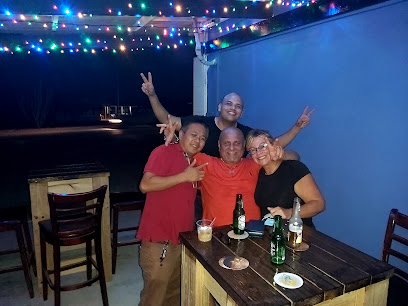
Paradera's food shack
Discover the authentic taste of Aruba at Paradera's Food Shack, where breakfast meets local flavor in a cozy setting.

New Ambiente Bar
Experience the vibrant nightlife at New Ambiente Bar in Noord, Aruba, where affordable drinks and lively ambiance create unforgettable moments.

Paradera Restaurant
Explore the authentic flavors of Aruba at Paradera Restaurant, where local cuisine meets island hospitality in a vibrant setting.

Los Recuerdos de Ella
Experience vibrant nightlife at Los Recuerdos de Ella, a premier bar in Santa Cruz, Aruba, featuring exotic cocktails and an inviting atmosphere.

Local Phrases
-
- HelloBon dia
[Bon dee-ah] - GoodbyeAyo
[Ah-yo] - YesSi
[See] - NoNo
[No] - Please/You're welcomePor fabor
[Por fah-bor] - Thank youDanki
[Dahn-kee] - Excuse me/SorryPardon
[Par-don] - How are you?Con ta bai?
[Kon ta bah-ee?] - Fine. And you?Bon. I bo?
[Bon. E bo?] - Do you speak English?Bo ta papia Ingles?
[Bo ta pa-pee-ah Ing-gles?] - I don't understandMi no comprende
[Mee no com-prehn-deh]
- HelloBon dia
-
- I'd like to see the menu, pleaseMi kier mira e menu, por fabor
[Mee key-air mee-rah eh meh-noo, por fah-bor] - I don't eat meatMi no ta come karni
[Mee no tah koh-meh kar-nee] - Cheers!Salud!
[Sah-lood] - I would like to pay, pleaseMi kier paga, por fabor
[Mee key-air pah-gah, por fah-bor]
- I'd like to see the menu, pleaseMi kier mira e menu, por fabor
-
- Help!Yudami!
[Yoo-dah-mee] - Go away!Bai for di mi!
[Bye for dee mee] - Call the Police!Yama polis!
[Yah-mah poh-lis] - Call a doctor!Yama un dokter!
[Yah-mah oon dohk-ter] - I'm lostMi ta perdi
[Mee tah pehr-dee] - I'm illMi ta malu
[Mee tah mah-loo]
- Help!Yudami!
-
- I'd like to buy...Mi kier cumpra...
[Mee key-air koom-prah] - I'm just lookingMi ta solamente mira
[Mee tah soh-lah-men-teh mee-rah] - How much is it?Cuant'eh ta?
[Kwan-teh tah?] - That's too expensiveEsaki ta muchu caro
[Eh-sah-kee tah moo-choo kah-roh] - Can you lower the price?Bo por baha e prijs?
[Boh por bah-hah eh prees?]
- I'd like to buy...Mi kier cumpra...
-
- What time is it?Kuant'or ta?
[Kwan-tor tah?] - It's one o'clockTa un'or
[Tah oon-or] - Half past (10)Mitad di diez
[Mee-tahd dee dee-ehs] - MorningMadruga
[Mah-droo-gah] - AfternoonAtardi
[Ah-tar-dee] - EveningAnochi
[Ah-noh-chee] - YesterdayAyera
[Ah-yeh-rah] - TodayAwe
[Ah-weh] - TomorrowMañana
[Mah-nyah-nah] - 1Uno
[Oo-noh] - 2Dos
[Dohs] - 3Tres
[Tres] - 4Cuatro
[Kwah-troh] - 5Cinco
[Seen-koh] - 6Seis
[Says] - 7Siete
[See-eh-teh] - 8Ocho
[Oh-choh] - 9Nueve
[Nweh-veh] - 10Diez
[Dee-ehs]
- What time is it?Kuant'or ta?
-
- Where's a/the...?Unda e... ta?
[Oon-dah eh... tah?] - What's the address?Kiko e adres ta?
[Kee-koh eh ah-drehs tah?] - Can you show me (on the map)?Bo por mustra mi (riba e mapa)?
[Boh por moos-trah mee (ree-bah eh mah-pah)?] - When's the next (bus)?Con ta e siguiente (bus)?
[Kon tah eh see-gwee-en-teh (boos)?] - A ticket (to ....)Un boleto (pa ....)
[Oon boh-leh-toh (pah ....)]
- Where's a/the...?Unda e... ta?
History of Paradera
-
Long before European explorers set foot on Aruba, the island was inhabited by the Caquetío people, a branch of the Arawak tribe. Paradera, with its fertile lands and natural resources, was a significant area for these indigenous inhabitants. They built their homes and cultivated the land, establishing a thriving community. Evidence of their presence can still be seen in the form of petroglyphs and ancient artifacts found in the area.
-
In 1499, Spanish explorer Alonso de Ojeda arrived in Aruba, marking the beginning of Spanish colonization. Paradera, like the rest of the island, came under Spanish control. During this period, the indigenous population was significantly affected by diseases brought by the Europeans, leading to a decline in their numbers. The Spanish used Aruba primarily for cattle ranching and as a strategic point for further explorations.
-
In 1636, the Dutch took control of Aruba from the Spanish. Paradera, with its strategic location and resources, became part of the Dutch West India Company's expansive trade network. Under Dutch rule, the island saw the establishment of plantations and the introduction of African slaves to work the land. Paradera's landscape began to change as new crops were introduced and the region was developed further.
-
The discovery of gold in Aruba in the 19th century brought significant changes to Paradera. The region saw an influx of prospectors and laborers hoping to find fortune. The gold mining industry led to the development of infrastructure, including roads and settlements, some of which passed through Paradera. Although the gold rush was relatively short-lived, it left a lasting impact on the area's economy and demographics.
-
One of Paradera's most famous landmarks was the Natural Bridge, a coral limestone formation that attracted tourists from around the world. Although the bridge collapsed in 2005, it remains a symbol of Paradera's natural beauty and its significance in Aruba's tourism industry. The area's unique landscapes, including the Ayo Rock Formations and the Casibari Rock Formations, continue to draw visitors, contributing to the local economy and cultural heritage.
-
Paradera is known for its rich cultural heritage, influenced by its indigenous, Spanish, and Dutch history. The area is home to several cultural festivals and traditional events that celebrate Aruba's diverse heritage. Local artisans and craftsmen keep traditional practices alive, offering visitors a glimpse into the island's past through art, music, and cuisine. Paradera's community remains deeply connected to its historical roots, preserving its unique identity amidst modern developments.
Paradera Essentials
-
Paradera is located in the central region of Aruba. The nearest airport is Queen Beatrix International Airport (AUA), located about 10 kilometers away. From the airport, you can take a taxi, which is readily available and takes approximately 15 minutes to reach Paradera. Alternatively, you can rent a car at the airport for more flexibility during your stay.
-
Paradera is a small area, and many attractions are within walking distance. For longer trips or to explore other parts of Aruba, you can use local taxis or rent a car. Public buses also operate regularly and connect Paradera to other major areas on the island. Biking is another popular option for getting around, as the terrain is relatively flat.
-
The official currency in Aruba is the Aruban Florin (AWG), but US dollars are widely accepted. Credit cards are generally accepted in most hotels, restaurants, and shops in Paradera. However, it's advisable to carry some cash for smaller establishments and local markets. ATMs are available throughout the area for convenient cash withdrawals.
-
Paradera is generally a safe area for tourists. However, it's wise to take standard precautions such as avoiding walking alone at night in poorly lit areas and keeping an eye on your belongings in crowded places. While Aruba has a low crime rate, petty theft can occur, so remain vigilant. There are no specific high-crime areas targeting tourists in Paradera.
-
In case of an emergency, dial 911 for immediate assistance. The nearest police station and medical facilities are located in Oranjestad, approximately 10 kilometers away. It is recommended to have travel insurance that covers medical emergencies. Pharmacies are available in Paradera for minor health issues and over-the-counter medications.
-
Fashion: Do wear light, breathable clothing suitable for Aruba's tropical climate. Avoid overly revealing attire when visiting religious sites. Religion: Do respect local customs and traditions. Public Transport: Do have exact change ready when using public buses. Don't eat or drink on public transport. Greetings: Do greet people with a friendly 'Bon Bini' (welcome in Papiamento). Eating & Drinking: Do try local Aruban dishes and accept food offerings graciously. Don’t refuse hospitality as it is considered impolite.
-
To experience Paradera like a local, visit the local markets where you can buy fresh produce and traditional Aruban goods. Engage with locals, as they are often friendly and willing to share stories about the area's history and culture. Don’t miss visiting the Ayo Rock Formations and the Casibari Rock Formations, which offer unique landscapes and hiking opportunities. For a taste of local cuisine, try dining at family-owned restaurants that feature authentic Aruban dishes.
Trending Landmark in Paradera
Nearby Cities to Paradera
-
Things To Do in Sero Blanco
-
Things To Do in Tanki Leendert
-
Things To Do in Oranjestad
-
Things To Do in Noord
-
Things To Do in Palm Beach
-
Things To Do in Santa Cruz
-
Things To Do in Pos Chiquito
-
Things To Do in Savaneta
-
Things To Do in San Nicolas
-
Things To Do in Sabana Westpunt
-
Things To Do in Westpunt
-
Things To Do in Soto
-
Things To Do in Barber
-
Things To Do in Sint Michiel
-
Things To Do in Julianadorp








